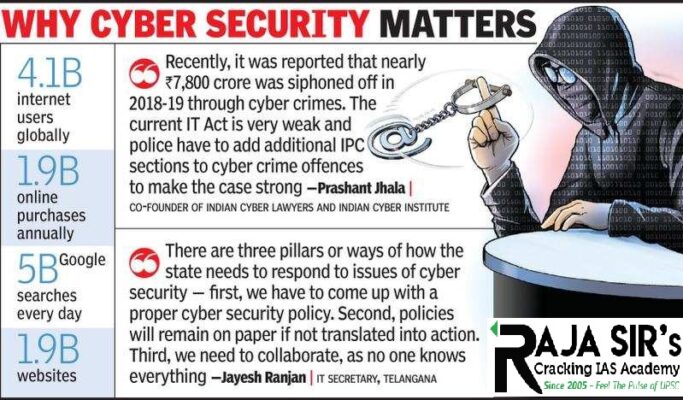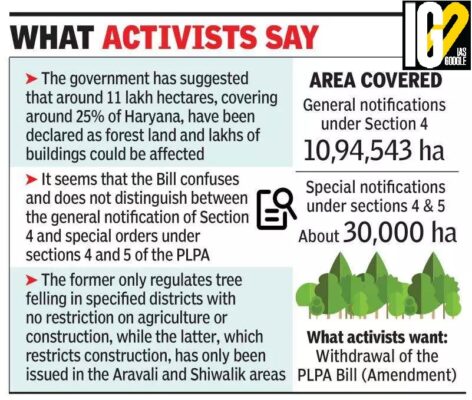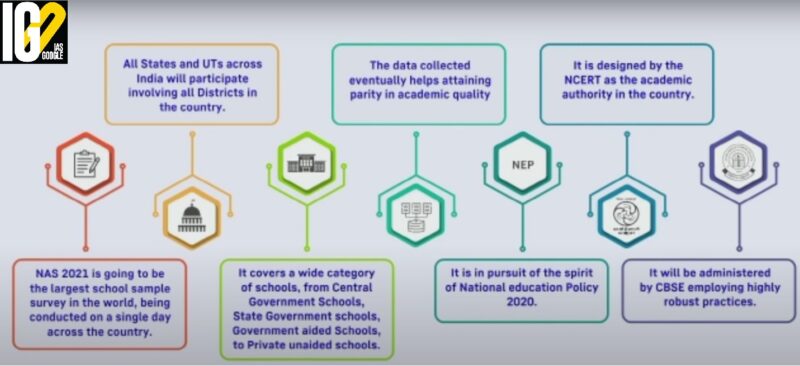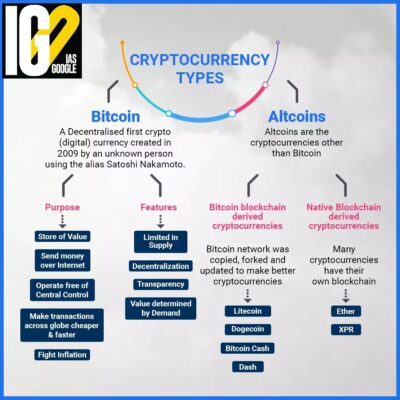- Home
- Prelims
- Mains
- Current Affairs
- Study Materials
- Test Series
18th Nov 2021
CAG REPORT LAYS BARE KERALA'S LACK OF PREPAREDNESS DURING FLOODS
Recently, a report from Comptroller and Auditor General showed that Kerala has not yet enacted legislation on flood plain zoning.
Flood Plain:









- A floodplain is an area of land adjacent to a river which stretches from the banks of its channel to the base of the enclosing valley walls.
- It experiences flooding during periods of high discharge.
- The soils usually consist of clays, silts, sands, and gravels deposited during floods.
- Floods carry nutrient-rich silt and sediment, and distribute it across a wide area.
- Some floodplains are mostly fine-grained silt, while others are sandy.
- There are two major processes involved in the natural development of floodplains: erosion and aggradation.
- The erosion of a floodplain describes the process in which earth is worn away by the movement of a floodway.
- Aggradation (or alluviation) of a floodplain describes the process in which earthen material increases as the floodway deposits sediment.
- Floodplains can support particularly rich ecosystems, both in quantity and diversity.
- These are usually very fertile agricultural areas. They are flat and often have relatively few boulders or other large obstacles that may prevent farming.
- Flood plains contain geological features such as:
- Oxbow lakes
- An oxbow lake is a crescent-shaped lake that results from the meandering course of a river along a floodplain.
- Point bars
- Point bars consist of alluvium that has been swept or rolled into place by secondary water flow at the bottom of the river.
- Natural levees
- Natural levees form when a river periodically floods its bank and deposits coarse alluvium such as gravelonto the banks in progressively higher stages when the river spreads and slows down its flow.
- Demarcate zones or areas likely to be affected by floods of different magnitudes or frequencies, and specify the types of permissible developments in these zones.
- Flood plains can minimize the damage from floods.
- The Ministry of Water Resources in 1975 had issued a draft Model Bill on floodplains and asked the states to frame legislation as Land and flood management is a state subject.
- The National Disaster Management Authority (NDMA) in 2008also issued guidelines for states for floodplain zoning as an important non-structural measure to mitigate floods.
- Both the central policies were insufficient as they were only suggestive and non- binding.
- Manipur was among the first to frame the Manipur Flood Zoning Act in 1978.
- Uttarakhand came up with the Uttarakhand Flood Plain Zoning Act 2012.
- The Maharashtra government also created norms to regulate and talked about prohibitory zones in floodplains of its rivers.
- Formation of strict floodplain zoning laws could involve displacing the people and their settlements in floodplains.
- It will necessitate compensating those displaced, their rehabilitation and enabling alternate sources of livelihood.
- Political stakes could be another reason that might prevent states to take stern steps in this regard.

- The first National Water Policy was adopted in September, 1987. It was reviewed and updated in 2002 and later in 2012.
- Objective:
- To assess the existing situation and to propose a framework for a plan of action with a unified national perspective.
- Salient features:
- Emphasis on the need for a national water framework law, comprehensive legislation for optimum development of inter-State rivers and river valleys.
- Water be treated as economic good so as to promote its conservation and efficient use.
- Adaptation strategies in view of climate change for designing and management of water resources structures and review of acceptability criteria has been emphasized.
- Incentivization of recycle and re-use.
- Ministry of Jal Shakti has taken up a nationwide campaign Jal Shakti Abhiyan - Catch the Rain.
- Atal Bhujal Yojana (Atal Jal).
- Pradhan Mantri Krishi Sinchayee Yojana (PMKSY).
- Mahatma Gandhi National Rural Employment Guarantee Scheme (MGNREGS).
- Watershed Development Management.
- Atal Mission for Rejuvenation and Urban Transforming (AMRUT).
- Unified Building Bye Laws (UBBL).
- Model Building Bye Laws (MBBL), 2016.
- Urban and Regional Development Plan Formulation & Implementation (URDPFI) Guidelines, 2014.

- Cyber laws are contained in the Information Technology Act, 2000 (“IT Act”) which came into force on October 17, 2000.
- The main purpose of the Act is to provide legal recognition to electronic commerce and to facilitate the filing of electronic records with the Government.
- CERT (Computer Emergency Response Teams) issues alerts and advisories regarding the latest cyber threats/vulnerabilities and countermeasures to protect computers and networks on regular basis.
- The government has issued guidelines for Chief Information Security Officers (CISOs) regarding their key roles and responsibilities for securing applications/ infrastructure and compliance.
- The government has impaneled security auditing organizations to support and audit the implementation of Information Security Best Practices.
- The government has formulated a Cyber Crisis Management Plan (CCMP) for countering cyber-attacks for implementation by all Ministries, Departments of Central Government, State Governments, and their organizations and critical sectors.
- The government is operating the Cyber Swachhta Kendra (Botnet Cleaning and Malware Analysis Centre). The center is providing detection of malicious programs and free tools to remove the same.
- The government has set up the National Cyber Coordination Centre (NCCC) to generate necessary situational awareness of existing and potential cyber security threats.

- The Octacopter will be used for aerial delivery of Covid-19 vaccines in remote areas of Karnataka.
- The UAV is made from light weight carbon fiber structure for ease of transportation.
- It has autonomous guidance through MEMS based digital Autopilot.
- It can carry a payload of 15 kg. It can fly at an altitude of 500 m.
- It is integrated with Powerful computer and latest generation sensors for versatile applications like
- Agricultural pesticide spraying
- Crop monitoring, mining survey
- Magnetic geo survey mapping

- It was enacted by the then government of Punjab in 1900.
- It provided for the conservation of subsoil water and/or prevention of erosion in areas found to be subject to erosion or likely to become liable to erosion.
- The original law provided for the conservation of subsoil water and/or prevention of erosion in areas found to be subject to erosion or likely to become liable to erosion.
- As per Section 3of the original act, the government has powers to bring any area ‘subject to erosion or likely to become liable to erosion under the ambit of the PLPA through a notification.
- But, a new section- Section 3A, has been inserted into the Bill to exclude certain areas from the ambit of the Act.
- Under its provisions, the PLPA won’t apply to ‘the lands included in the final development plans.
- Any other town improvement plans or schemes published under the provisions of many laws like the Haryana Municipal Corporation Act, 1994, the Gurugram Metropolitan Development Authority Act, 2017.
- Environmentalists feel that the latest move by the government has exposed thousands of acres landfalling on the hills and foothills of Aravallis.
- It covers over 26,000 acres in Gurgaon and Faridabad districts, to mining and real estate development.
- Due to the provisions of the PLPA, the constructions were not allowed on the hills and foothills of the Aravallis.
- The power to transfer high court judge was not present in the Government of India Act, 1935 or the first Draft of the Constitution.
- It was proposed by the Constituent Assembly’s Drafting Committee at the final revision stage, and it was embodied as Article 222 in the Constitution of India.
- The President may, after consultation with the Chief Justice of India, transfer a Judge from one High Court to any other High court.
- It does not mention the grounds or the procedure by way of which such power is to be exercised.

- It is the system of appointment and transfer of judges that has evolved through judgments of the Supreme Court, and not by an Act of Parliament or by a provision of the Constitution.
- The Supreme Court collegium is headed by the Chief Justice of India (CJI)and comprises four other senior most judges of the court.
- A High Court collegium is led by its Chief Justice and four other senior most judges of that court.
- Names recommended for appointment by a High Court collegium reaches the government only after approval by the CJI and the Supreme Court collegium.
- The government’s role is limited to getting an inquiry conducted by the Intelligence Bureau (IB) if a lawyer is to be elevated as a judge in a High Court or the Supreme Court.
- It can also raise objections and seek clarifications regarding the collegium’s choices, but if the collegium reiterates the same names, the government is bound, under Constitution Bench judgments, to appoint them as judges.
- The collegium came into being through interpretations of pertinent constitutional provisions by the Supreme Court in the Judges Cases.
- The Supreme court held that the proposal for appointment to a High Court can emanate from any of the constitutional functionaries mentioned in Article 217 and not necessarily from the Chief Justice of the High Court.
- The Constitution Bench also held that the term “consultation” used in Articles 124 and 217 was not concurrence – meaning that although the President will consult these functionaries, his decision was not bound to be in concurrence with all of them.
- The judgment tilted the balance of power in appointments of judges of High Courts in favor of the executive.
- A nine-judge Constitution Bench overruled the decision in First Judge Case and devised a specific procedure called ‘Collegium System’ for the appointment and transfer of judges in the higher judiciary.
- The majority verdict in the Second Judges Case accorded primacy to the CJI in matters of appointment and transfers
- It ruled that the term “consultation” would not diminish the primary role of the CJI in judicial appointments.
- The recommendation should be made by the CJI in consultation with his two senior most colleagues, and that such recommendation should normally be given effect to by the executive.
- This opinion laid down that the recommendation should be made by the CJI and his four senior most colleagues, instead of two.
- It also held that Supreme Court judges who hailed from the High Court for which the proposed name came, should also be consulted.
- Even if two judges gave an adverse opinion, the CJI should not send the recommendation to the government.
- The collegium system is opaque and does not provide any basis for appointment and transfer of judges.
- By amending the Constitution, via 99thAmendment Act, National Judicial Appointments Commission (NJAC) was formed.
- It included Chief Justice of India as the Chairperson, two other senior judges of the Supreme Court, the Union Minister of Law and Justice and two eminent persons.
- But it was quashed down by the Supreme Court as it tilted the balance of power in appointment of judges towards the executive and threatened the independence of the judiciary thereby harming the Basic Structure of the Constitution.

- National Achievement Survey (NAS) is a nationally representative large-scale survey of students' learning.
- It is a process of gathering information to develop a deep understanding of what students know, understand, and can do with their knowledge as a result of their educational experiences.
- Undertaken by: The Ministry of Education
- Conducted by: CBSE in collaboration with the respective states/union territories.
- Ambit of Survey:
- NAS 2021 is set to cover the entire spectrum of schools.
- It includes Government Schools of Central Government as well as State Government, Government Aided Schools, and Private schools across India.
- It is expected that NAS 2021 will cover around 1.23 lakh schools and 38 lakh students across 733 districts of 36 states and Union Territories.
- NAS 2021 is set to cover the entire spectrum of schools.
- Phases of NAS:
- Instrument development
- Sampling design
- The actual administration of the test
- Significance
- It gives a system-level reflection on the effectiveness of school education.
- It will help to guide education policy, planning, and implementation at national, state, district, and classroom levels for improving the learning levels of children and bringing about qualitative improvements.
- Components of the Test:
- NAS 2021 will be conducted in Language, Mathematics, and Environmental Science for Classes III and V.
- Language, Mathematics, Science and Social Science for Class VIII
- Language, Mathematics, Science, Social Science, and English for Class X.
- It will be conducted in 22 mediums of instruction including Assamese, Bengali, Gujarati, Hindi, English, Tamil, Kannada, Malayalam, Manipuri, Urdu, Marathi, Bodo, Mizo, Odia, Punjabi, Telugu, Garo, Khasi, Nepali, Konkani, Lepcha and Bhutia.
- Benefits of Survey:
- This survey will help in assessing the learning interruptions and new learnings during the COVID-19 pandemic.
- Its findings would help diagnose learning gaps of students and determine interventions required in education policies, teaching practices, and learning.
EXPERTS CALL FOR CRYPTO WITH PROPER REGULATION
Recently, Experts and key bodies have favored a tightly controlled cryptocurrency regime in India over a blanket ban on the alternative payment ecosystem. Cryptocurrencies?
- It is a collection of binary data which is designed to work as a medium of exchange.
- Individual coin ownership records are stored in a ledger, which is a computerized database using strong cryptography to secure transaction records, control the creation of additional coins, and verify the transfer of coin ownership
- Cryptocurrencies are generally fiat currencies, as they are not backed by or convertible into a commodity.
- Cryptocurrency does not exist in physical form (like paper money) and is typically not issued by a central authority.
- Cryptocurrencies typically use decentralized control as opposed to a central bank digital currency (CBDC).
- Bitcoin is the first decentralized
Benefits of Cryptocurrencies
- Protection from inflation:
- Inflation has caused many currencies to surge their value to decline with time.
- At the time of its launch, almost every cryptocurrency is released with a tough and fast amount.
- Self-governed and managed:
- Governance and maintenance of any currency is serious factor for its development.
- The cryptocurrency transactions are stored by developers/miners on their hardware, which they get the transaction fee as a gift for doing so.
- Decentralized:
- A major pro of cryptocurrencies is that they are mainly decentralized.
- cryptocurrencies are controlled by the developers using them and those who have a significant amount of the coin or by a corporation to develop it before it’s released into the market.
- Cost-effective mode of transaction:
- One of the most uses of cryptocurrencies is to send money across borders.
- With the help of cryptocurrency, the transaction fees paid by a user are reduced to a negligible or zero amount.
- It does so by eliminating the need for third parties to verify a transaction.
- Easy transfer of funds:
- Cryptocurrencies have always kept themselves as an optimal solution for transactions.
- Secure and private:
- Privacy and security have always been concerns for cryptocurrencies.
- The blockchain ledger relies on different mathematical puzzles, which are hard to decode.
- It makes cryptocurrency safer than ordinary electronic transactions.
Drawback of Cryptocurrencies
- Illegal transactions:
- The privacy and security of cryptocurrency transactions are high, it’s hard for the government to trace down any user by their wallet address or keep tabs on their data.
- Bitcoin has been used as a mode of payment (exchanging money) during many illegal deals in the past, like buying drugs on the dark web.
- Risk of Data Loss:
- If any user of a cryptocurrency loses the private key to their wallet, the wallet will remain locked away along with the number of coins inside it.
- No refund or cancellation:
- If there is a dispute between concerned parties, or if someone mistakenly sends funds to a wrong wallet address, the coin cannot be retrieved by the sender.
-
Vulnerable to hacks:
- Cryptocurrencies are very secure; exchanges don’t seem to be that secure.









 Latest News
Latest News
 General Studies
General Studies